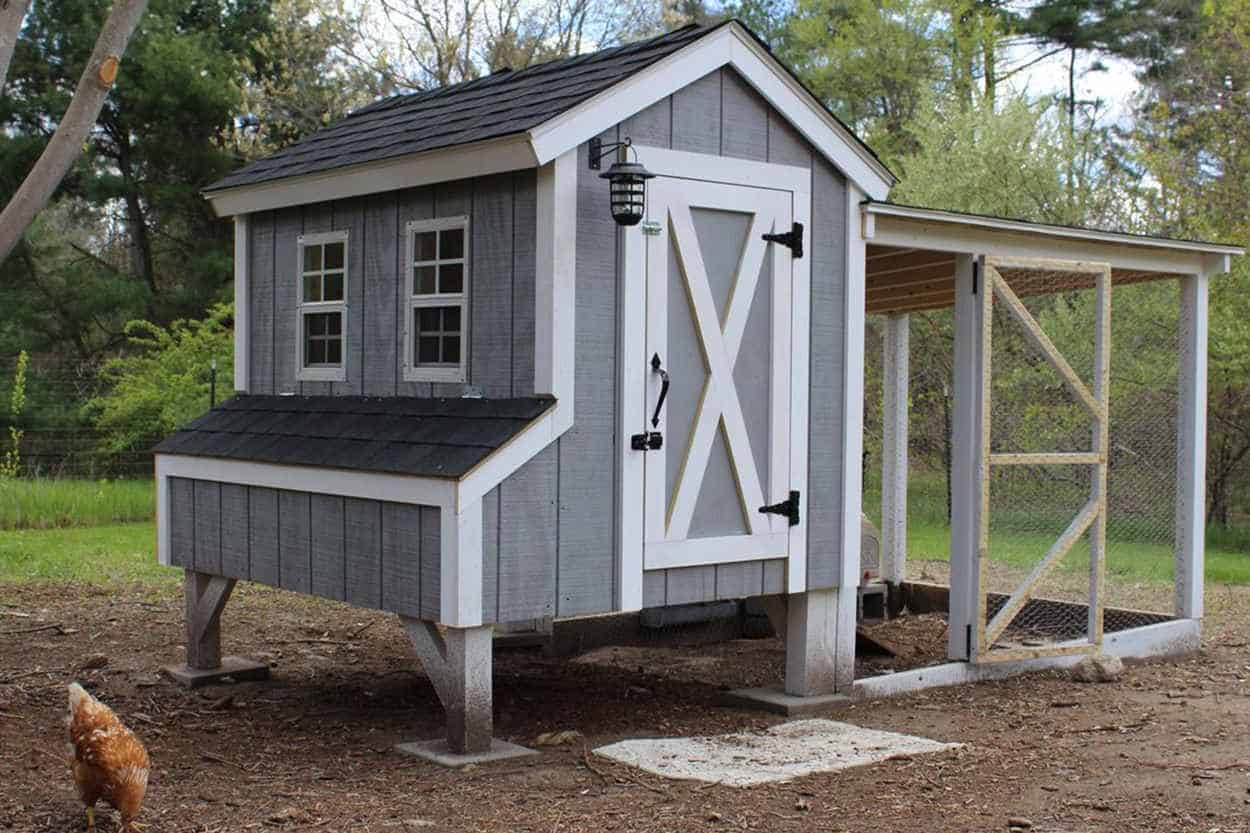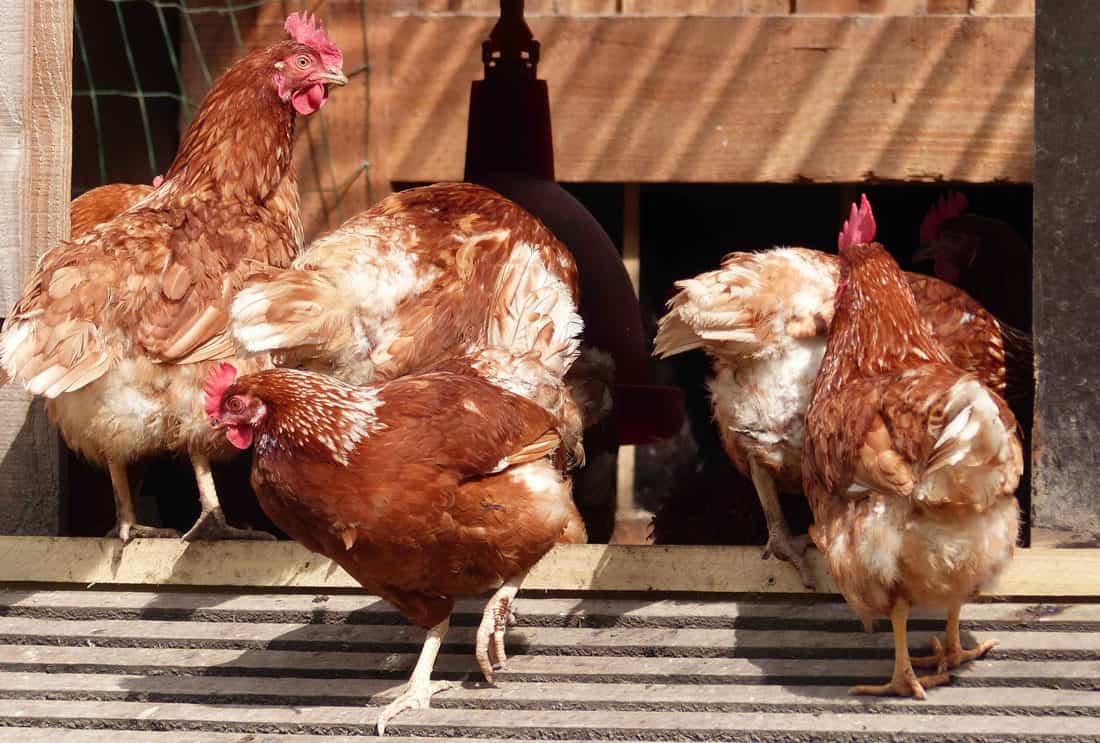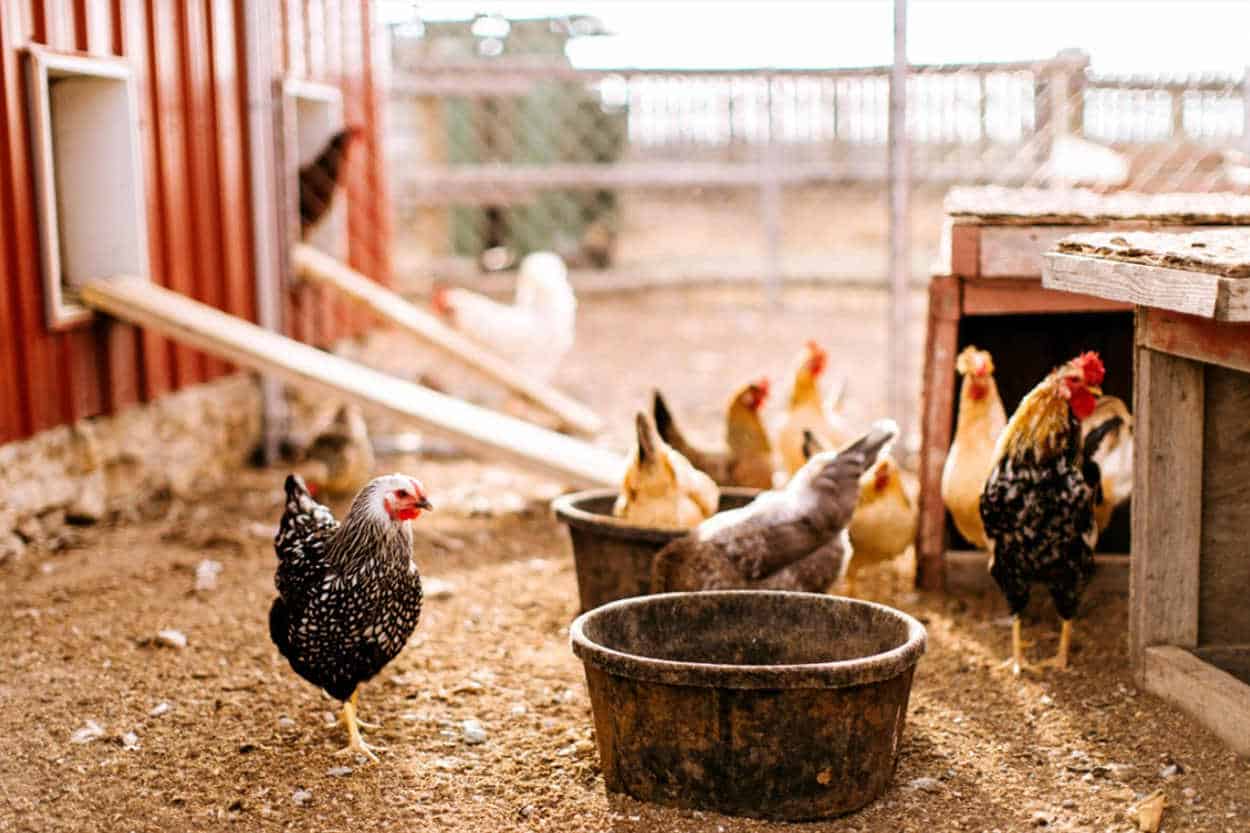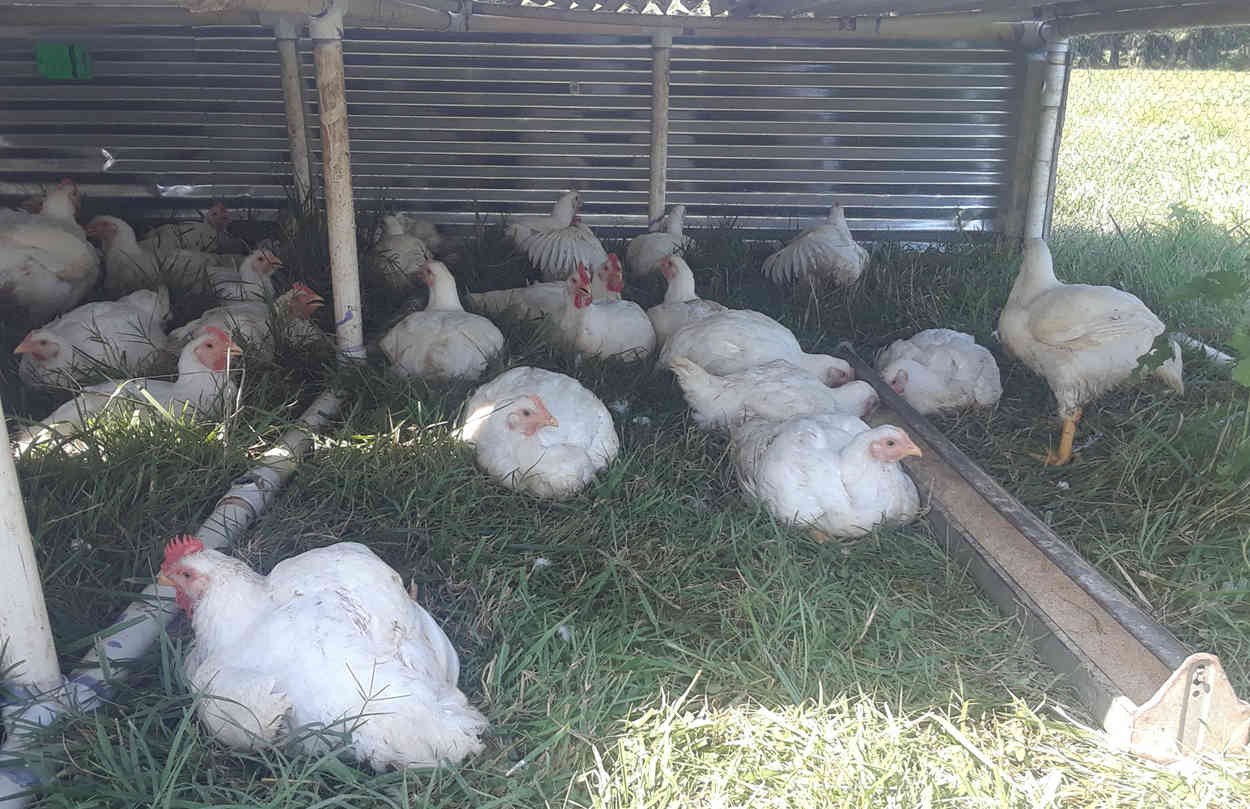So it’s moving day for your chickens, and you don’t know how to handle the whole ordeal. No worries, you’re not alone.

Moving into a new place can be tough on anyone, our feathered companions included. Uprooting your chickens from their old coop into a new crib is like moving into a new house as a kid. Sure, there’s that initial excitement about having a bigger room, but when it’s time to settle down and go to sleep, there are intense feelings of anxiety. Before you know it, you’re asking Mommy to leave your night light on.
Chickens can also struggle to adjust to new coops. The new environment causes stress, anxiety, and disorientation. But it is not all hopeless because we can help our feathered little friends settle in. And it all starts with preparing the coop for the chickens.
Preparing the New Coop

When moving your chickens into a new coop, you have to recognize that the main goal is to make the transition as smooth as possible. And it all starts with making their new crib as cozy and homey as possible.
Tips 1. Inspect the New Coop For Safety
How safe are their new living quarters? Before you do anything, take some time to inspect the new coop. Ensure all its doors and security features are in tip-top shape. Take a walk inside, and ensure there are no protruding nails that may scratch or prick our future guests.
Tips 2. Provide Enough Space
Chickens are particular birds, and they don’t take kindly to downsizing. These feathery creatures need enough space to flap their wings and stretch their legs. If your new coop is smaller, they might just skip it altogether. So, check whether your new coop has enough space for your flock; make necessary adjustments if you have to.
Tips 3. Disinfect the New Coop
Whether newly constructed or used, disinfection should be at the top of your checklist. We don’t want to bring in our chickens to a mite-infested home; c’mon, man, we love our birds too much. Break out your fumigation equipment and get to cleaning.

Tips 4. Set Up Proper Lighting and Ventilation
Next, ensure that the new coops have enough provisions for ventilation and lighting. Dust all the vents (if they are clogged up with cobwebs and dust) and, open all doors, let the fresh air in. Lighting is important; remember, darkness breeds anxiety and disorientation, and that’s why you needed your night light switched on as a kid.
Tips 5. Transform the New Coop into a Cozy Home
A house is not a home until you make it truly yours. But how can we this concept over to our chicken companions?
There are little touches that can make your new coop cozy and homey. You can start by installing your nest boxes and filling them with hay. You can also lay beddings of hay or wood shavings to make the new home comfortable.
It is always a nice touch to transfer some of their eggs to the new nesting area. So when they come in to explore their new home, and they see their new nesting area complete with their eggs, they’ll resume brooding.
And finally, fill your feeders and watering containers; there’s no better housewarming gift than some food and drinks.
Introducing the Chickens to the Coop

Congratulations on your new coop. And now that you’ve done everything to ensure that the coop is safe and ready for occupation, it seems like there’s only one thing left to do; introduce the chickens. How do you do that? Let’s figure it out.
There are two strategies you can use to introduce your chickens to your new coop, and they include:
- Let them discover the coop themselves
- Lock them in the new coop for a couple of days
Tips 6. Let Them Discover the New Coop Themselves
Some would argue that this is the best method of introducing chickens to a new coop because it subjects them to little stress. What you can do to help their cause is build a temporary enclosure around the coop.
It will take a couple of days for all the chickens to discover the new coop as their own. And with this temporary enclosure, you’re effectively protecting them from predators. You can even add a couple of roosting bars around the new coop to add a layer of comfort to their new living situation.
Speaking of predators, all chickens are aware of the dangers of the night; that’s why they seek shelter as soon as the sunlight begins to fade. On the first evening of introducing them to their new coop, it is highly recommended that you come and supervise their exploration of the coop and their behavior towards it.
You may notice that one by one, your chickens will make their way into the new coop. Okay, you can sweeten the deal by peppering their path to the coop with delicious treats or by transferring their eggs into the new nesting boxes. But chickens being the curious birds they are, they’ll want to explore their surroundings.
You cannot expect all the chickens to make their own way into the coop. For those that don’t, you’ll have to catch them and place them into their new home. It will take a couple of days until all the chickens accept their new coop as their own. And when that day comes, you can uninstall your outer enclosure.
Here’s Ricardo from Bock Bock Bouquet and how he handles this strategy:
Tips 7.Lock Them in the New Coop For A Couple of Days
Confinement is also an effective way to force your chickens to acclimatize to their new living quarters. Just a word of caution; this strategy leads to high levels of stress among your flock. But there are things that you can do to reduce these levels of stress.
First things first, fill your feeders and water containers with enough feed and water for the guests. Use high-quality feed and clean water. It’s bad enough that the gals have to deal with a new environment; they don’t have to worry about feed and water.
Keeping their coop mentally stimulating can also help them settle in faster. Roosting bars are particularly helpful, and we’ve already discussed transferring their eggs to their new nesting area.
Confining your chickens in their new coop for three days is enough to convince the feather puffs that their new home is a better proposal.
Here’s how Eric and his daughter handle this strategy:
Reducing Stress During the Move
Moving chickens subjects the poor little birds to stress. Chasing them down, catching them, and exposing them to an unfamiliar environment ruffles their feathers. And, as I said before, there are things that you can do to reduce this stress. Below are more steps you can take to make the move bearable for the little birds.
Tips 8. Establishing a Routine
Consistency can soothe the minds of your restless birds. Imagine the poor little things. Put yourself in their shoes; you’re in a new house, and everything is new to you. You don’t know the feeding schedule, the time the door opens and closes. Quite literarily, you’re in the dark.
Establishing a routine is your way of reassuring the chickens that apart from the new coop, it’s business as usual. So, set a time for you to come and refill your feeders and water containers. Keep to this time and remain consistent.
Establish a regular schedule for opening and closing the coop. Whether it’s a manual or automatic door, be consistent with your timing.

Tips 9. Promoting a Positive Environment
Chickens are living creatures, similar to us humans. And like us, chickens are in need of exercise and fun activities. Sure, they can get plenty of exercise during the day, out on the run, but what can we do to reduce their anxiety levels when they are indoors?
Chickens like to perch on roosting bars, so incorporating them in the new coop can help your chickens cope. And bringing in roosting bars from the old coop can help your babies acclimatize faster due to familiarity.
You can do the same with your old nesting boxes. If they are still in good condition, you can transfer them to the new coop.
Another way of promoting a positive environment is by creating a predator-proof environment for your chickens in your new coop. It’s hard for chickens to stay at ease when they can see predators lurking in the distance.
Final Thoughts
Getting your chickens used to a new coop can seem like quite the task at first glance. But don’t worry because I got you covered! There are two ways you can go about this – letting those little fellas wander around by themselves or keeping them locked up for a spell so they adjust properly.
Trust me, both methods work well. These approaches might cause a bit of anxiety for our feathered pals, so just give them some TLC, and soon enough, they’ll feel right at home. Now then, let me ask you this: have you ever seen a group of chickens scratching away, happier than clams at high tide?
Well, friend, that’s because they were given proper care during relocation. And hey, wouldn’t you want to see your gals flapping their wings with glee? Thought so. Word on the street is it’s all about creating a harmonious coop atmosphere. And before you know it, you’ll have yourself one flock of contented hens.

Joseph Hudson has been raising chickens for over 15 years. In 2018, he completed the Agriculture & Natural Resources program at Mt. San Antonio College. He currently raises over 1400 chickens on his 7.5-hectare farm. He keeps sharing his experience on raising healthy and happy chickens on Chicken Scratch The Foundry.







